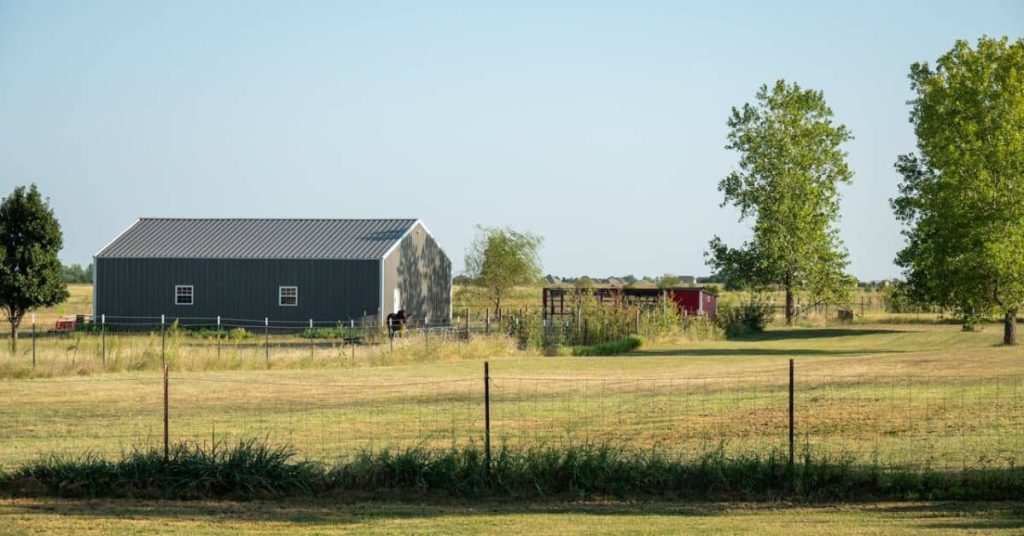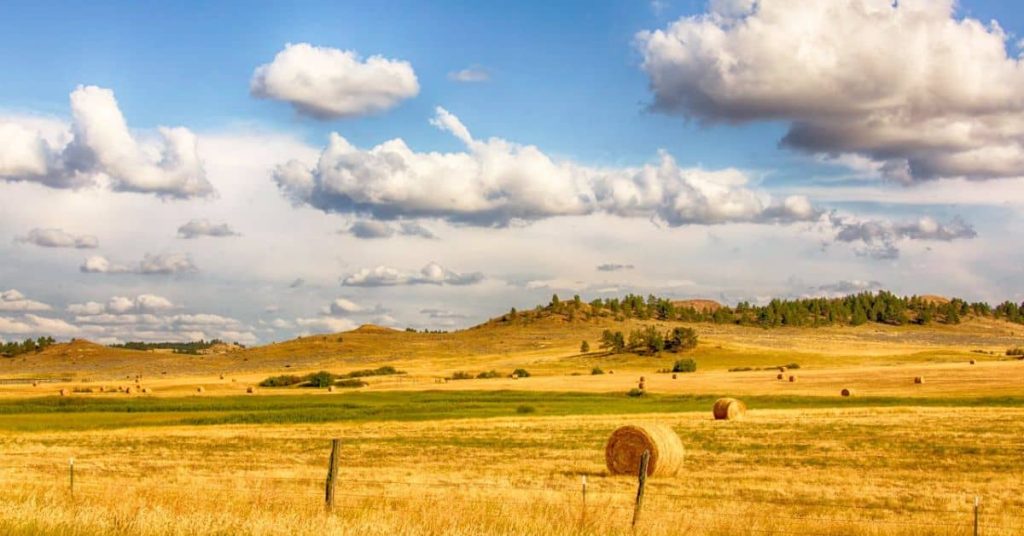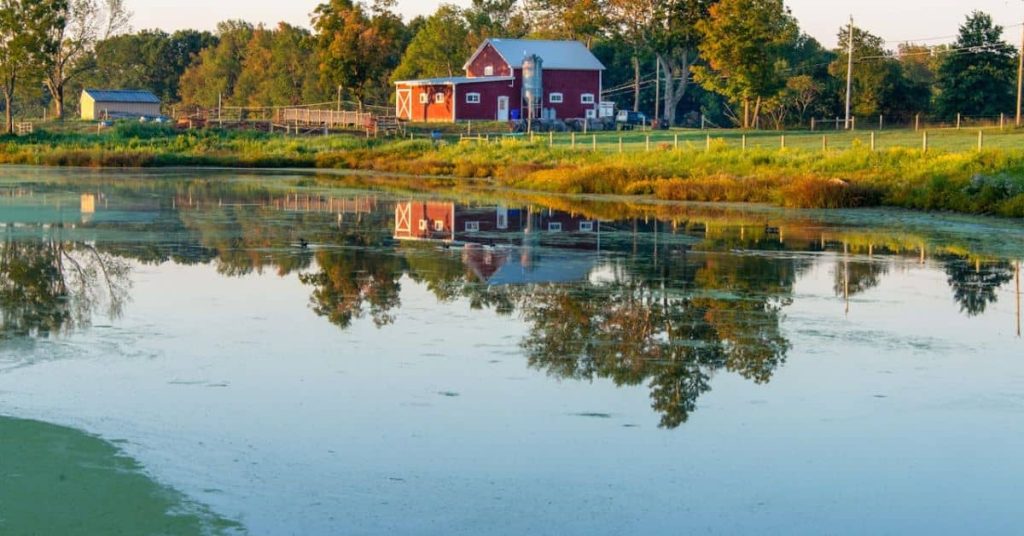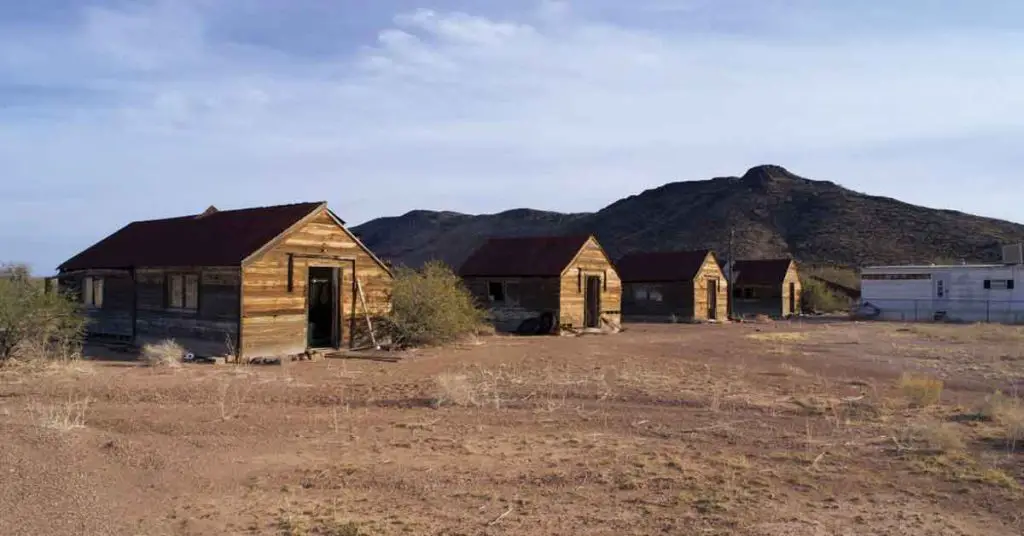Homesteading in Oklahoma starts with knowing the land, the law, and the weather. Here’s the short answer: affordable acreage, friendly exemption rules, and a nine‑month growing season make it doable. But you must plan for heat, wind, and water rights.
Last spring I swapped my eighth‑acre Tulsa backyard for three sandy acres outside Ada. The first week’s gusts sent my plastic hoop house tumbling across the pasture. After eight years raising chickens and drought‑proof beds in North Texas, I staked it with T‑posts and fence wire, problem solved.
Follow along and you’ll gain a clear checklist for land buying, permits, and crop choices. For example, a $1,500 rain‑catch system trimmed my August water bill by half, proving smart prep pays. We’ll also unpack zoning quirks city dwellers miss. Plus highlight resilient crops like Cherokee Purple tomatoes that shrug off 100‑degree highs. Stick around and step into your first Oklahoma season confident, not guessing.
If you need quick answers, jump into our FAQ section for quick, clear answers.
Pros, Cons & Big Picture
Oklahoma homesteading offers cheap land and long seasons but demands heat, wind, and water planning. Know the laws, pick resilient crops, and budget for wells or catchment.
What Does Homesteading Mean Today?
Homesteading today is less about staking 160 wild acres and more about living simply on land you control. In Oklahoma that can be a Tulsa backyard or a 40‑acre spread near Woodward. The goal stays the same: grow food, raise animals, and rely less on stores. Zoning, taxes, and climate shape every choice, so learning the basics early saves headaches later.
Key 2025 Trends Shaping Oklahoma Homesteads
Rising land‑use flexibility for micro‑plots
Cities like Norman now allow front‑yard gardens and a handful of hens. These small wins let urban folks test homesteading skills without moving.
Popular off‑grid tech upgrades (solar wells, battery banks)
Falling panel prices and state rebates make a starter 5 kW array realistic. Pair that with a shallow‑well pump and you cut the electric bill while keeping cucumbers alive in August.
Oklahoma’s Homesteading Advantages & Challenges
Long Growing Season, Affordable Acreage
Frost arrives late October. That gives tomato vines a second wind and lets okra thrive. County auctions list rural acres for under $2,500 each, so entry costs stay low for now.
Wind Extremes, Water‑Rights Hurdles
Gusts over 40 mph flatten row covers and dehydrate seedlings. Surface water belongs to the state, so irrigation from streams needs a permit (see Oklahoma Water Resources Board guidelines).
What worked for me: I wrapped my hoop house posts with old carpet strips before pounding them in. The padding kept the PVC from splitting when the red dirt shifted after spring storms.
Actionable steps
- Test soil before you buy; OSU Extension kits cost about $15.
- Check county zoning for livestock limits.
- Budget a windbreak line of cedar saplings on the south and west edges.
- File homestead exemption paperwork by March 15 to reduce property tax.
- Install a 2,500‑gallon rain tank to backup municipal supply.
- Choose heat‑tolerant varieties like Cherokee Purple tomatoes.
- Track average wind speed on the NOAA site before placing greenhouses.
Source: Oklahoma State University Extension, Vegetable Garden Planning Guide (okstate.edu).
Choosing Your Homestead Location and Land Size

Match your goals to Oklahoma’s acreage limits (≤1 acre urban, ≤160 acres rural), check zoning and HOAs, study soil with OSU and USDA maps, and price 5-acre lots county by county before you buy.
Urban vs. Rural Acreage Limits (≤1 Acre city / ≤160 Acres rural)
In town, you can shield up to 1 acre as your primary residence. In rural areas, protection can reach 160 acres. Those limits shape everything from livestock plans to how much garden you can irrigate without jumping through more permits. Decide first whether you want close services and stricter rules or wide space with longer drives and looser ordinances.
Best Places to Buy Homestead Land in Oklahoma
Cheapest Counties for 5-Acre Plots
Southeastern and south-central counties often show the lowest per-acre asks for small parcels. Scan county auction lists, tax resales, and owner-finance classifieds. Prices change fast, so track a few target counties for 60 to 90 days to spot the real floor.
Zoning & HOA Rules to Check Before You Buy
Zoning can cap animal counts, ban roadside produce stands, or restrict accessory dwellings. HOAs may forbid poultry, tall fences, or visible rain tanks. Read covenants, not just the listing. If the seller cannot provide them, call the county clerk.
Understanding Soil Types Across the State
Using OSU Extension Soil Maps
Eastern Oklahoma leans loamy and forgiving. Central red clay can compact and needs organic matter. The Panhandle gets sandy and wind prone. Confirm with the USDA NRCS Web Soil Survey and OSU Extension county sheets before you budget raised beds or a tractor (USDA NRCS, nrcs.usda.gov).
What worked for me: I pulled a soil report first, then sized my rain tanks. Poor infiltration meant I focused on mulch and drip tape instead of fighting runoff.
Actionable steps
- Decide urban or rural first, based on acreage limit, commute, and livestock plans.
- Pull county zoning codes and HOA covenants before making an offer.
- Check USDA NRCS Web Soil Survey and OSU Extension maps for your parcel.
- Walk the land after rain to see pooling, erosion, and access issues.
- Track 5-acre parcel prices in three candidate counties for 2 to 3 months.
- Price windbreaks, water storage, and fencing into your first-year budget.
- File your homestead exemption on time to lock in tax relief.
Step‑by‑Step Guide to Legal Setup & Startup

File your homestead exemption first, follow Form 921 instructions, review off‑grid and water laws, then choose drought‑resilient crops and join local homesteader groups.
Oklahoma Homestead Exemption Basics
The exemption shields up to one acre in town or 160 acres in the country from most creditors and can trim property taxes. You must live on the land and apply with your county assessor every year by March 15.
Legal Paperwork Walk‑Through
2025 Homestead Exemption Form 921 Screenshot Guide
What worked for me: I filled the form online, printed, then walked it to the assessor so I could confirm the parcel number on their screen. The clerk caught a typo before it delayed approval.
Off‑Grid Homesteading Laws in Oklahoma
Solar and wind systems need no state permit, but any battery bank over 50 kWh must meet local fire codes. Composting toilets are allowed if you also have a gray‑water plan on file.
Water Rights & Rainwater Harvesting Permits
Surface water belongs to the state. Pumping from streams or ponds requires a permit, but you may catch unlimited rain from your roof. Check volume limits for storage tanks over 5,000 gallons (Oklahoma Water Resources Board, owrb.ok.gov).
Raising Livestock: Chickens, Goats & Local Ordinances
Most cities allow six hens, no roosters. Rural counties set livestock numbers by acreage, so verify stocking rates before buying goat kids.
Best Crops for Oklahoma Homesteaders
Drought‑Resilient Varieties for 2025
Choose Cherokee Purple tomatoes, Cowhorn okra, and Black‑eyed peas; they recover quickly after heat spikes.
Building a Sustainable Homestead Community
Finding Homesteading Groups Near You
Facebook “Oklahoma Homesteaders” pages and county OSU Extension workshops offer bartering boards, seed swaps, and neighbor advice.
Actionable steps
- Download Form 921 and prefill all owner names exactly as on the deed.
- Submit exemption paperwork to the county assessor by March 15.
- Verify local codes on battery storage and composting toilets.
- Apply for a stream‑water permit if planning irrigation pumps.
- Set up a 2,500‑gallon rain catchment tank before summer storms.
- Check city livestock limits; adjust coop size before ordering chicks.
- Join an OSU Extension class to meet mentors and swap seeds.
This checklist walks you from paperwork to planting, letting your Oklahoma homestead take root on solid legal ground.
2025 Costs, Taxes, and Financial Planning

Expect $2,000–$3,200 per acre in 2025, budget about $12,000 for a 2‑acre start‑up, file Form 921 for tax relief, and aim for breakeven by selling fresh produce within one summer.
Current Per‑Acre Land Prices by Region
Recent sales show eastern counties averaging $3,200 per acre, central red‑clay zones about $2,600, and the western Panhandle near $2,000. Prices stay lowest where rainfall drops, so weigh irrigation costs against cheaper listings.
First‑Year Micro‑Homestead Budget (2 Acre Example)
What worked for me: I spent more on soil amendments and less on fancy tools. A $200 Broadfork and loads of compost beat a shiny tiller I would rarely use.
| Item | Cost |
| Land down payment (10%) | $520 |
| Closing & title fees | $750 |
| Soil test & compost | $400 |
| Fencing & gates | $1,800 |
| 2,500‑gallon rain tank | $1,500 |
| Starter seeds & chicks | $280 |
| Misc. permits & fees | $150 |
| Total | $5,400 |
Property Tax Relief & Income Limits Explained
File the homestead exemption by March 15 to knock $75–$150 off annual taxes. Seniors or low‑income owners may qualify for an extra freeze if household income stays below $30,000 (Oklahoma Tax Commission, tax.ok.gov).
ROI Example: Garden‑to‑Market in One Season
A 50 × 50‑foot vegetable plot can yield 400 lb of tomatoes. Selling half at $2.50 per pound covers seed, mulch, and water for the entire garden. The rest feeds the household and reduces grocery bills through winter.
Actionable steps
- Track county land auctions for 60 days to confirm real per‑acre averages.
- Use USDA cost‑of‑production spreadsheets to test crop profitability.
- File Form 921 with the assessor’s office right after closing.
- Open a separate checking account for farm expenses and income.
- Join local farmers’ markets early to secure a stall for summer sales.
- Keep detailed input records; you’ll need them for Schedule F tax filing.
- Reinvest first‑year profit into soil amendments, not gadgets.
Careful planning turns those first dollars into fertile ground for your Oklahoma homestead’s long‑term growth.
Real‑Life Oklahoma Homesteads: Lessons & Inspiration
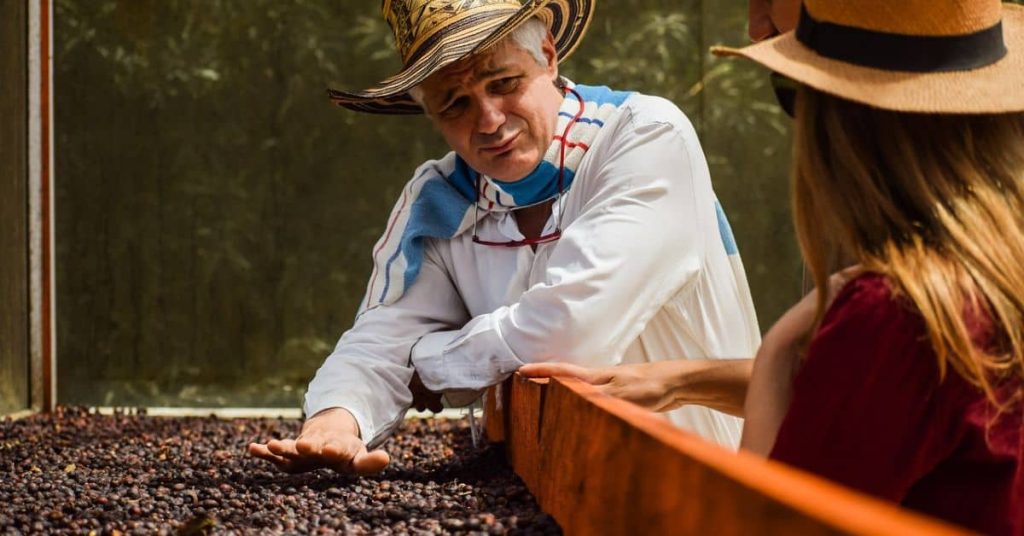
Successful Oklahoma homesteads pair careful water planning, community learning, and drought‑resilient crops, proven by a Kay County family farm, 2025 Expo takeaways, and OSU expert advice.
Case Study: 5‑Acre Family Farm in Kay County
The Ramirez family bought five rolling acres near Blackwell in 2019. They started with two hoop houses, twenty hens, and a dug pond that catches roof runoff. By year three they sold weekly veggie boxes and had goats clearing weed patches.
What worked for me: copying their gravity‑fed drip lines. I reused food‑grade barrels on a small rise, so my tomatoes sip water without pumps or hoses.
Diary: What I Learned at the 2025 Homesteading Expo
Tulsa’s Expo felt like a county fair crossed with a tool shed. I joined a pruning demo, tasted freeze‑dried okra chips, and swapped cuttings at the seed library booth. The biggest lesson? Start small. One speaker showed how her quarter‑acre plot pays the chicken feed by selling herb bundles to local cafés.
Interview with an OSU Educator on Drought‑Proof Gardening
Dr. Jenna Hollis of Oklahoma State University Extension stressed matching crops to microclimates. She suggests planting heat‑tolerant black‑eyed peas where afternoon shade is scarce and recommends a thick straw mulch to cut evaporation by half (Oklahoma State University Extension, extension.okstate.edu).
Actionable steps
- Tour local farms to see working water systems before digging your own pond.
- Attend at least one regional homestead expo or OSU field day each year.
- Install gravity‑fed barrels on a rise for low‑cost drip irrigation.
- Plant drought‑resilient staples like black‑eyed peas and cowhorn okra.
- Use straw or wood‑chip mulch to conserve soil moisture.
- Track produce yields and costs in a simple spreadsheet for clear profit checks.
- Share surplus seed or starts in community swaps to widen crop diversity.
These real stories show that modest plots, shared knowledge, and smart water use can turn Oklahoma’s tough weather into a thriving homestead life.
FAQ
What are the rules for homesteading in Oklahoma?
State law lets you protect up to 160 rural acres or 1 urban acre, but you must follow county zoning, secure water permits, and file the homestead exemption form each year.
Is Oklahoma a good state to homestead in?
Yes. Land stays affordable, the growing season lasts about nine months, and off‑grid setups face few obstacles, just budget for hot winds and occasional drought.
How many acres do you need for homesteading in Oklahoma?
You can begin on a city quarter‑acre, but two to five acres usually give beginners enough space for gardens, hens, and small livestock without overwhelming chores.
How do I start homesteading with no money in Oklahoma?
Lease or house‑sit rural land, join seed swaps, repurpose pallets for raised beds, and file the homestead exemption early to trim yearly costs.
Homesteading in Oklahoma for beginners: where to start?
Test your soil, plant a small kitchen garden, add six laying hens if zoning allows, and attend an OSU Extension workshop for hands‑on guidance.
Homesteading in Oklahoma for free: myth or reality?
Totally free land is rare, but you can slash costs through owner financing, bartering labor for space, and using recycled materials for fencing and coops.
Best homesteading locations in Oklahoma?
Northeast counties like Cherokee and Delaware offer fertile loam and steady rain, while south‑central areas trade drier summers for cheaper acreage.
Are there active homesteading groups near me?
Yes; search Facebook for county‑based “Oklahoma Homesteaders” pages or ask your county OSU Extension office about meet‑ups and seed swaps.
What homesteading conferences happen in Oklahoma?
The Oklahoma Homesteading & Gardening Expo in Tulsa each July is the largest, and OSU Small Farms conferences plus regional seed fairs fill out the calendar.
Recap: Homesteading in Oklahoma
Wind‑scorched summers, surprise ice storms, and tight water rules can make Homesteading in Oklahoma feel like coaxing tomatoes from red clay. Yet each challenge you’ve met, finding the right acreage, filing Form 921, mulching through drought, builds the resilient base every small farm needs. Remember, the affordable land and nine‑month growing season leave plenty of room to experiment, adjust, and thrive. If you hit a snag, revisit Choosing Your Homestead Location and Land Size or skim the checklist in Step‑by‑Step Guide to Legal Setup & Startup for a quick reset.
Your homestead dream really can flourish here, one well‑planned season at a time. How did your first harvest go, or what hurdles still worry you? Share your story or question in the comments so we can all learn together.
Disclaimer: The information provided in this article is for general informational purposes only and is not intended to be a substitute for professional advice. The author of this article does not claim to be an expert in homesteading and the information provided should not be relied upon to make decisions about your own homesteading journey. Please do your own research and consult with a qualified professional before making any decisions about your homestead.
Share via:
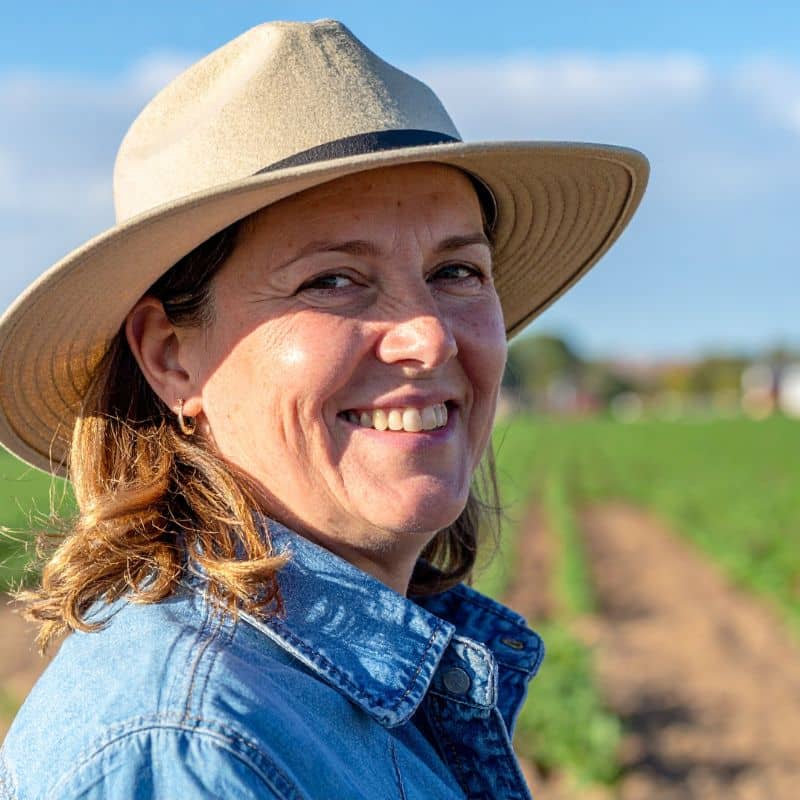
Co-Founder at Homesteading Simple | Horticulture & Sustainable Living Educator | 25 Years in Practical Homesteading

